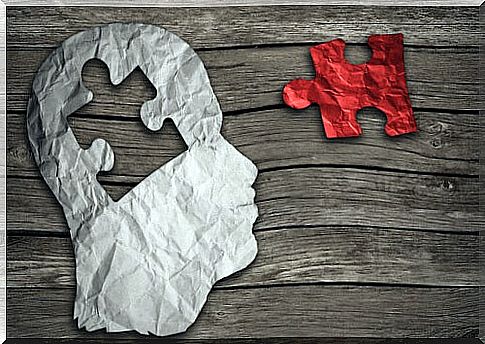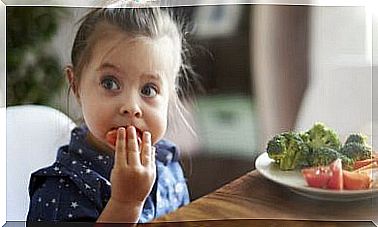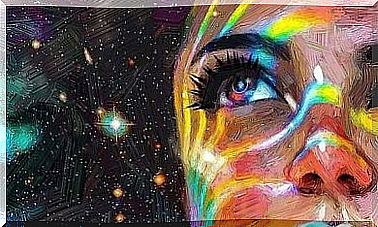Differences Between Personality, Temperament And Character

Personality, temperament and character are 3 concepts that in psychology are used to express ways of thinking and feeling, so they are closely related. But this great affinity causes their meanings to be confused too often.
To try to use the terms personality, temperament and character with criteria, we will try to delimit and size these three terms in a simple way. To do this, before starting to see their differences, it must be clear that temperament and character are dimensions of personality. That is, both are the essential components of the latter.
Temperament: constitutional basis
When we speak of temperament, we are referring to that innate part of our personality determined by our genetic inheritance. Hence, it is considered as the biological and instinctive dimension of the personality. In fact, it is the personality factor that manifests itself first.
In babies it is already possible to distinguish different types of temperament. Thus, depending on their tendency to feel and express positive or negative emotions and a good or bad mood, they can be considered “easier” or “difficult” children in behavioral terms.
In this article published in the Salamanca Papers of Education (University of Salamanca), delves into the usefulness of knowing temperament in children. Among them, María Pilar Quiroga highlights the advantages when it comes to predicting their reactions and knowing which parenting style is the most appropriate to use in each particular case.
Thus, “easy” children adapt well to most parenting styles; while the “difficult” ones require more work and effort on the part of adults. For example, those with greater temperament need to establish limits such as those imposed by the authoritarian style, but they would not be able to withstand the pressure that this way of educating entails.
Being of genetic origin and the result of the inherited constitution, temperament is difficult to modify, manipulate or change due to the consequences. Always, in some way, there will be that tendency; although it is no less true that we can get resources to enhance or inhibit its manifestation. If we were an iceberg, it would always be part of the submerged portion, being able to exercise certain control to modify how it manifests itself in the uncovered portion.

Hippocrates and Galen: the humors
The theory of the 4 humors, enunciated by Hippocrates in Ancient Greece, was one of the first that tried to explain the temperament. This doctor considered that both the personality and the state of health of the person depended on the balance between 4 types of substances : yellow bile, black bile, phlegm and blood. He called them bodily humors.
Centuries later, Galen of Pergamum, taking this Hippocratic classification as a reference, categorized people according to their temperaments. With them, he distinguished 4 classes of people:
- Choleric (yellow bile): passionate and energetic people, who get angry easily.
- Melancholic (black bile) : sad, easily moved individuals with great artistic sensibility.
- Phlegmatic (phlegm): cold and rational subjects.
- Sanguíneo (blood): cheerful and optimistic people, who express affection to others and are self-confident.
Character: the reflection of our experiences
It is the component of the personality that encompasses the temperament (inherited constitution) and the set of educational and relational habits that have been learned by the person. That is, it is both an innate and an acquired aspect.
In addition, it is a consequence of the experiences and social interactions that we have in our lives and from which we obtain certain learning. Thus, all these habits influence our temperament and biological predispositions. And they are modulating, varying, refining and shaping our personality. Therefore, the origin of character is cultural.
It is less stable than temperament. Character, not being inherited, is not fully manifested in the initial stages of evolutionary development. Rather, it goes through different stages, until it reaches its maximum expression in adolescence. Therefore, it is modifiable and capable of being changed; for example, through social education. Today, this term is often confused with personality, so that they are often used interchangeably.
Personality: biology and environment
Personality is the result of adding character (temperament and learned habits) and behavior. That is, it encompasses both aspects. It is perhaps this cohesion that makes it possible to elucidate more clearly the differences between personality, temperament and character.
Hence, it cannot be considered only the result of genetic inheritance, but also a consequence of the environmental influences to which the subject is subjected. Personality is an individual distinctive and, therefore, is characteristic of the person. In addition, according to numerous studies, it remains stable over time and in situations.

Defining the personality
In Psychology, personality is the set of emotions, cognitions, and behaviors that make up a person’s behavior pattern. It is the way we feel, think or behave. It is a set of processes that interact with each other and regulate themselves, forming a dynamic system. The two most widely used and accepted definitions in Psychology today are:
- “Personality is the sum total of the behavior patterns, current or potential, of an organism determined by heredity and the environment, the total sum of the behavior patterns, current and potential, of an organism determined by heredity and the environment” . Hans Eynseck (1947)
- “Personality are the typical patterns of behavior (including emotions and thoughts) that characterize the adaptation of the individual to life situations.” Michel (1976).
However, there is no unitary or clear definition of what personality is, since it is a complex system and there are as many definitions as there are authors and currents. Each philosophy or theory has provided its vision and concept, similar to each other but different in their nuances. They all have something in common: they consider that there is a certain pattern in the person that leads them to behave in a similar way in similar situations. In this pattern, a series of variables would come into play, which would shape it.
According to the current, these variables receive one name or another: characteristic, subject, parts, traits … The essential thing is that the richness of the psychology of the personality lies in all these contributions, theories, studies and research, together with the integration of all they.
Personality, temperament and character are different concepts and it is precisely in this difference that we find part of their richness and value to understand and try to predict, through them, our behaviors.









